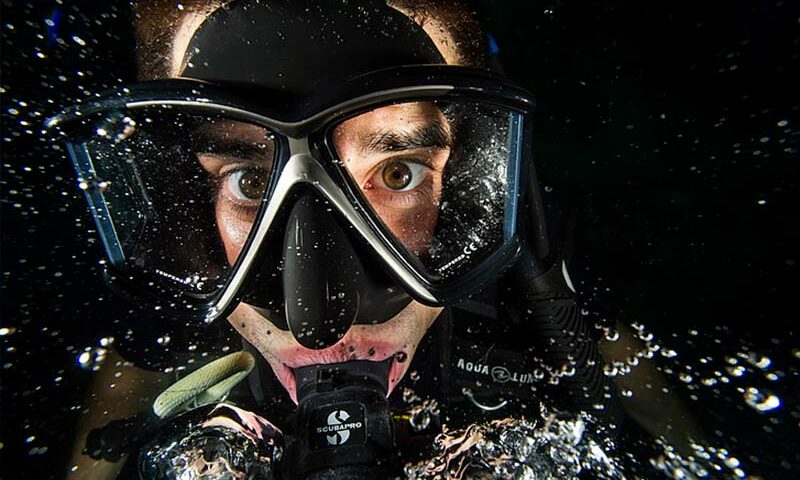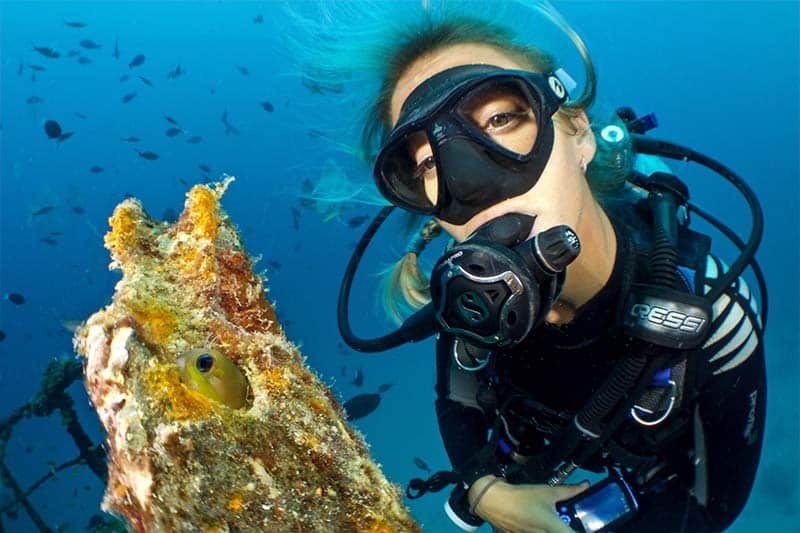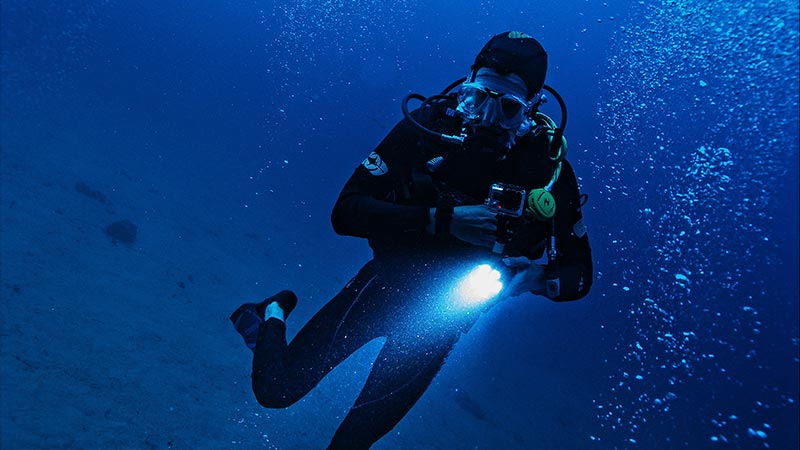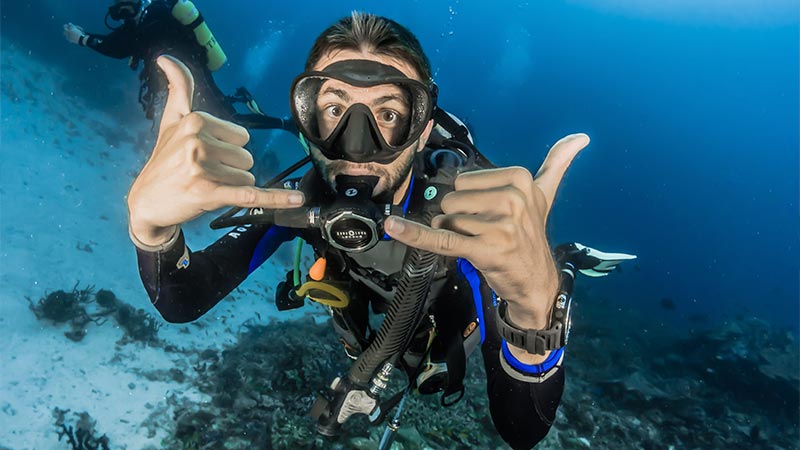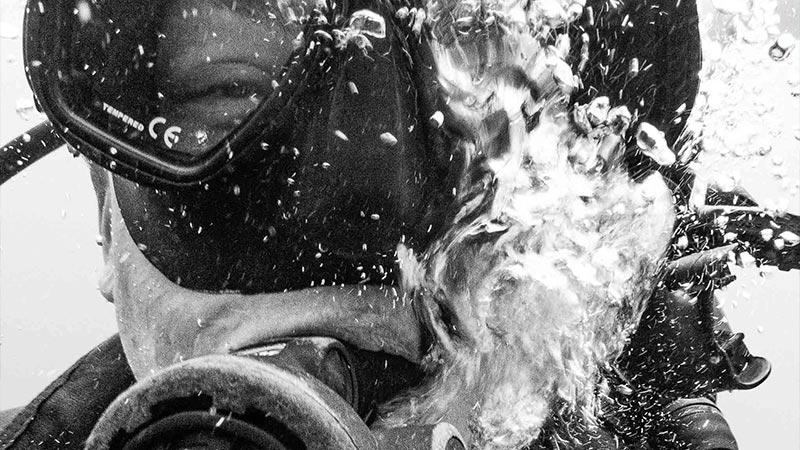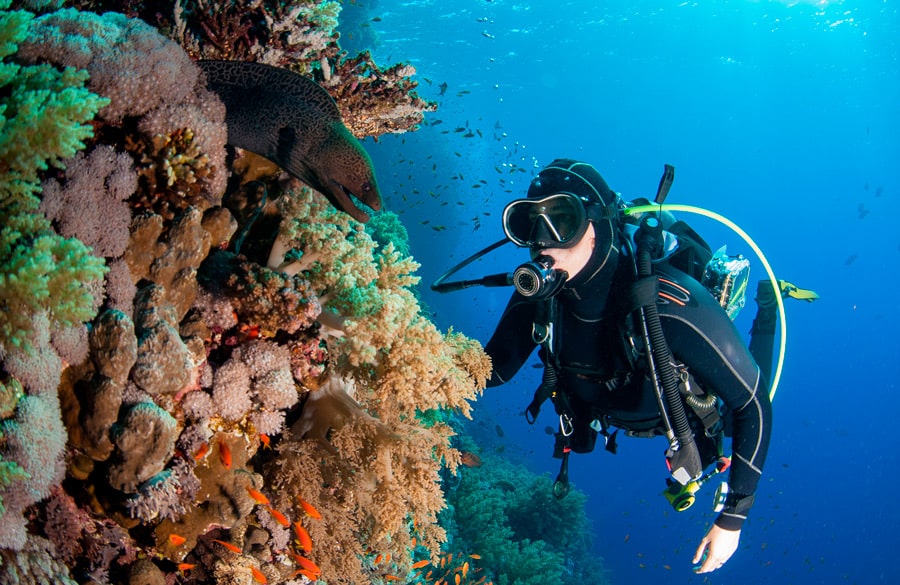1. What is Nitrogen Narcosis?
Narcosis is a physiological phenomenon. We use the term “drugged” when a substance alters our consciousness, often associated with artificial drowsiness. It can also affect neuromuscular function, which refers to the connections between our brain and the muscles, impacting our movement and even perceptions of the environment and our own body.
In the context of diving, the narcotic substance is nitrogen, although it could be any other inert gas (such as argon, krypton, and xenon) if we could breathe them.
If the partial pressure of nitrogen decreases, such as when we ascend, the effects of nitrogen narcosis disappear without consequences. This brings us to a crucial point: nitrogen narcosis itself doesn’t pose a direct health risk, but the impaired decision-making capacity it causes can be hazardous.
2. What Causes Nitrogen Narcosis
2.1. The Chief Cause of Nitrogen Narcosis Is
Divers, who are known for their imagination, have given various names to nitrogen narcosis: deep-sea drunkenness, deep-sea intoxication, and deep-sea ecstasy, Martini Effect. Ok, the last terms in these names aren’t crucial for our discussion.
Let’s focus on the first terms of each. The common element in all these names is depth.
Now, you may wonder, how deep?
Numerous experiments have evaluated the cognitive functions of divers. They were tested on memory, sentence comprehension, and simple calculations at various depths. These tests indicate that the effects of nitrogen narcosis become noticeable at around 30m / 98ft, although the intensity of these effects varies among individuals.
In summary: the main cause of nitrogen narcosis is the behavior of this gas once dissolved in the bloodstream when under pressure. However, it is not the only one.
2.2. Other Causes of Nitrogen Narcosis Related to The Nature of The Gas
It’s important to note that we are specifically focusing on nitrogen narcosis because it is the gas commonly used in diving. However, there are other inert gases that also have narcotic potential. For example, xenon is used in medicine for anesthesia and is effective even at sea level.
On the opposite side, we find helium, which, despite being an inert gas, does not cause narcosis in autonomous diving depths, only at depths exceeding 1000 meters. This is likely why it is used in TRIMIX gas mixes!
So, what exactly does compressed nitrogen do in our bodies that can intoxicate us?
The Meyer and Overton hypothesis (the most widely accepted) considers that the narcotic potential of a gas is determined by its ability to dissolve in fat. Why? Because neurons have a layer of fat that covers them.
As all divers know, pressurized nitrogen dissolves in our body, including that fat. This causes the membrane to thicken, making it difficult for nerve impulses to flow normally. However, it’s important to note that this hypothesis is not fully proven.
Other theories suggest that nitrogen affects neuronal synapses, causing malfunctions in the brain where nerve impulses are no longer transmitted normally.
According to the biochemical theory, narcotic gases affect neurotransmitters, which are the biomolecules responsible for carrying information.
Additionally, the molecular weight of the gas has been considered a possible factor. The higher the molecular weight, the greater the narcotic potency.
Which is the right answer? Probably they all are. We are really talking about a syndrome, which means that there is not a single biological mechanism involved.




